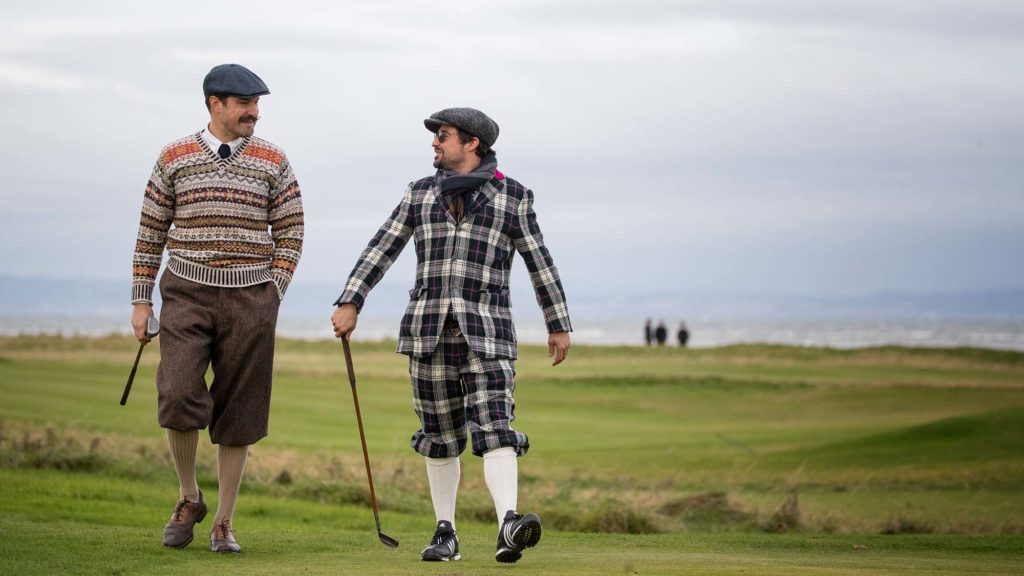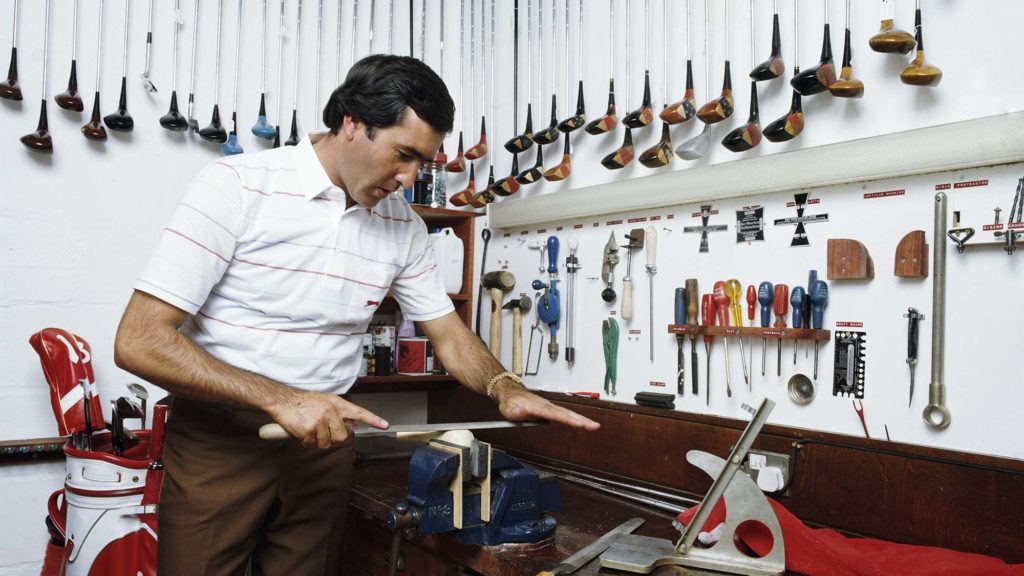A legion of avid Australians is breathing new life into old golf equipment.
About this time last year, I replaced my nine-year-old set of irons with a long-overdue new set. By chance, the set my old ones had replaced was also nine years old at the time, which means that sitting in my garage today is a 19-year-old set of Nike Pro Combo irons. I used to take them out occasionally when they were my second-string set but now that they’re third in line, it’s time to part ways.
At first I thought of giving them to a junior or beginner golfer, but in this age of club-fitting, I wondered whether they would suit someone else. And what about the clubs’ condition? While I looked after them like my offspring when they were my everyday set, there’s now a decade of neglect and isolation in a garage to account for.
It turns out there is life in retirement for my once-cherished sticks.
It sounds counter-intuitive in a golf world where new gear is released at the same frequency as three-putts, however it’s refreshing to know there is a rising brigade of passionate golfers preserving – and using – old equipment. While so many of us are driven by and excited about what’s new, these golfers are fascinated by what’s old. Call it a niche within what is a niche sport.
Ross Baker is the foremost voice on old golf equipment as the only traditional clubmaker in Australia, making clubs by hand the way they were 200 years ago. I asked him whether a near-20-year-old set of irons is actually ‘old’.
“That’s a tremendous question,” he laughed. “There’s no answer to what’s old. What you were playing with yesterday is ‘old’, as technology is moving so fast.

“When I was a trainee golf professional back in the 1970s, people would come into the pro shop and say, ‘I’ve found a really old golf club – it’s got a wooden shaft.’ Well, now someone will come to me and say, ‘I’ve found a really old golf club – it’s got a wooden head.’”
Baker makes a great point. The first metal wood surfaced in 1979, which makes it more than 40 years old. That’s not ‘old’ in the grand scheme of things, but a 25-year-old golfer who’s never hit a persimmon wood would think it prehistoric.
He fondly recalls the classic wooden woods that would become dry in summer, get wet in winter, tended to warp and needed a level of TLC that’s completely unnecessary today. Yet despite their vulnerability, these clubs endure. Why?
“Perhaps people are a little bit sick and tired of the modern club sending the ball so far… and perhaps the irons being so forgiving that you don’t have the playing characteristics of the ’50s and ’60s,” muses Baker, who collects clubs from all eras, from the 1800s through until now.
“In saying all that, I’m not against technology at all. A lot of people say, ‘We should go back to the good old days of persimmon and blades,’ and I’m not like that. I think we should be embracing technology – I do think the ball should be reined in – but there’s been this frustration from a lot of people that, ‘Hey, these clubs are almost playing the game by themselves. Let’s get back to something a little bit more traditional.’”
There are more notable figures behind the push. Count tour player-turned TV commentator Ewan Porter among those enamoured with old clubs, while Andrew Marchbank, the teaching professional at Perth’s Sea View Golf Club, is another heavily into it. Then there’s the Australian Golf Heritage Society, which stages regular hickory events that are growing in patronage. Yet perhaps the most prominent momentum stems from the likes of Geoff Ogilvy and Lucas Herbert bringing out hickories and other old clubs to compare shots hit with their current equipment.

“It’s a pity there’s not more of that,” Baker says. “It’s very, very isolated.”
Whether ancient, old or simply a decade or two past their prime, these clubs continue to hold a joy for anyone who strikes a ball with them. The feeling of hitting old clubs is a snapshot of golf’s past that cannot be underestimated and should not be left to slide into extinction.
Still, my dilemma remains: what to do with my old set?
I made another phone call, this time to Sandy Jamieson, the PGA pro who formerly coached Robert Allenby and Jarrod Lyle and these days is the driving force behind 1ClubGolf, which serves as a fantastic entry point into the game.
Jamieson has a brilliant idea when it comes to disused clubs: stage a tournament where the entrants must compete using a set of clubs that they are willing to donate at the end of the round. Those clubs would then be passed on to a beginner golfer. So every player who participates theoretically draws a brand-new face to golf. Superficially, that might sound like it’s excluding a host of golfers – those without a spare set to relinquish. Yet think of it this way: for every new set of clubs purchased, chances are there’s a set – like mine – being replaced.
“There are garages across the country full of golf clubs that are doing nothing,” Jamieson says.
I love the idea. It’s a smart gesture and a fitting way to farewell a much-loved set of clubs. I’m in. Tell us if you are, too.



